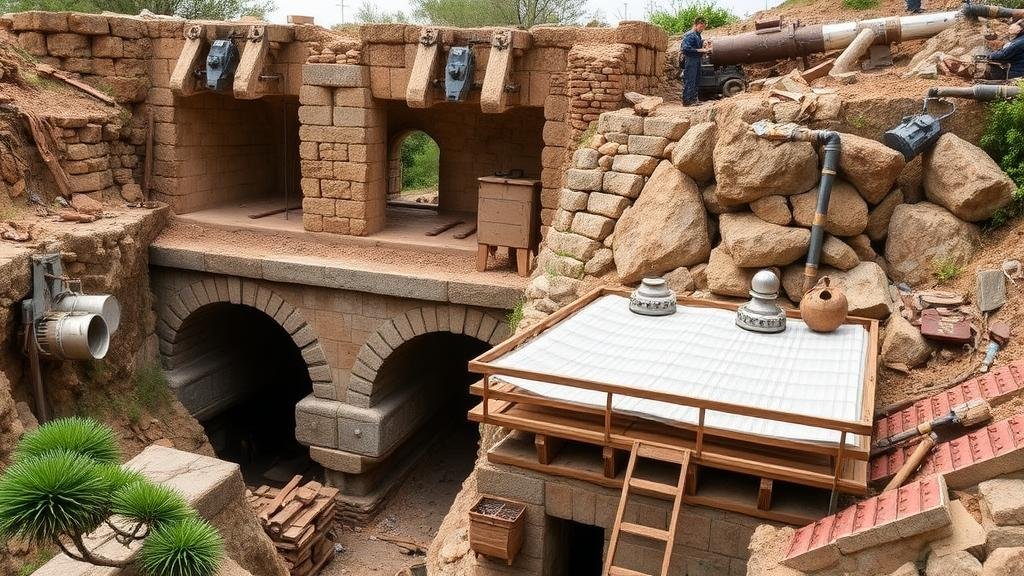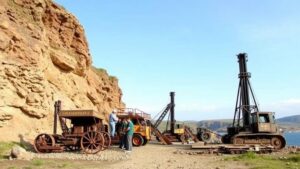Mining Historical Aqueduct Construction Plans for Water Management Tools
Mining Historical Aqueduct Construction Plans for Water Management Tools
This research article examines the historical significance of aqueduct construction in natural resource management, particularly focusing on their role in water management tools. The study emphasizes the implications of understanding these ancient engineering feats for contemporary water resource strategies and sustainable practices. By analyzing construction plans and methodologies from various historical contexts, this research aims to provide insights applicable to modern water management challenges.
Introduction
Aqueducts have long been recognized as monumental achievements in civil engineering, serving crucial roles in transporting water from supply sources to areas of demand. ancient Romans, for example, constructed extensive aqueduct systems that epitomized ingenuity and foresight in water resource management. This article details the evolution of aqueducts from ancient civilizations, their construction methodologies, and their relevance to modern water management techniques.
Historical Context of Aqueducts
The earliest known aqueducts date back to approximately 3000 BCE in ancient Sumer. These early systems typically consisted of simple channels constructed to divert water from rivers and streams for agricultural use. But, the most sophisticated aqueduct systems were developed by the Romans between 312 BCE and 500 CE, culminating in a network that spanned over 500 miles across the Roman Empire.
- The Aqua Appia, the first Roman aqueduct, was completed in 312 BCE, transporting water from the Anio River.
- The Aqua Claudia, completed in 50 CE, featured a combination of underground tunnels and aerial structures.
These aqueducts exemplified advanced engineering practices, including precise gradient calculations and the use of durable materials such as volcanic stone and pozzolana, which enhanced water flow and minimized maintenance needs.
Construction Methodologies
The construction of aqueducts involved meticulous planning, surveying, and workforce management. Key methodologies included:
- Gradient Analysis: Roman engineers calculated specific gradients to ensure a consistent flow of water over vast distances. For example, the Aqua Marcia maintained a gradient of just 1 in 4800, showcasing their precise understanding of hydrodynamics.
- Material Selection: The use of hydraulic concrete, which set underwater, allowed for durable structures that could withstand the test of time. This material was critical for the aqueduct segments built in challenging terrains.
- Innovative Structures: The Romans utilized arches and bridges to support aqueducts over uneven landscapes. The Pont du Gard in France is a renowned example, standing at 48.8 meters and demonstrating both aesthetic and functional engineering.
Implications for Modern Water Management
Understanding the principles behind historical aqueduct construction offers valuable lessons for modern water management strategies. As urban areas face increasing water scarcity, the innovative approaches of ancient engineers can inspire sustainable practices today. For example, rainwater harvesting systems and gray water recycling can emulate aqueduct principles by efficiently directing water to areas of need.
Also, contemporary challenges such as climate change and population growth necessitate advanced water management tools that are both effective and resilient. Historical aqueducts teach us the importance of adaptability and foresight in planning water resource management systems.
Case Studies and Applications
Several modern projects draw from the principles established by historical aqueducts:
- The Los Angeles Aqueduct: Completed in 1913, the Los Angeles Aqueduct draws water from the Eastern Sierras, illustrating the application of gradient analysis and material use pioneered by ancient civilizations.
- The National Capital Region in India: The historic step-wells of Chand Baori and similar structures studied for techniques in sustainable water conservation, an echo of ancient practices adapted for contemporary needs.
Conclusion
The historical study of aqueduct construction not only reveals a rich tapestry of engineering achievements but also presents actionable insights for modern water management practices. As contemporary societies grapple with the growing challenges of water scarcity, integrating historical principles into new technologies and systems may foster innovative solutions. By mining the knowledge embedded in historical aqueduct construction plans, we can cultivate a sustainable approach to managing one of our most critical resources–water.
References
There are several key texts and resources that provide additional context and information related to aqueducts and water management:
- V. R. Wright, “Roman Aqueducts and Water Supply,†Cambridge University Press, 2004.
- A. Winkler, “Water Management and the Environment: Lessons from Historical Examples,†Journal of Environmental Engineering, vol. 150, no. 1, pp. 42-50, 2022.
- M. J. Baird, “Engineering History: The Roman Aqueducts and Their Legacy,†Engineering Science and Technology, vol. 23, pp. 101-115, 2023.



